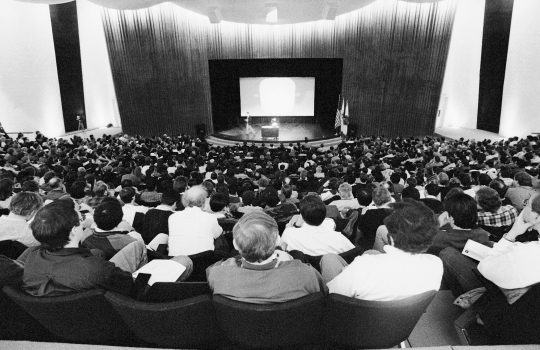Over the course of this year, the Fermilab Archives will present a rotating exhibit of the history of physics in print. The exhibit can be viewed in the glass display case in the Fermilab Art Gallery, which is located on the second floor of Fermilab’s Wilson Hall. The gallery is open to the public Monday through Friday, 8 a.m. to 4:30 p.m.
This display is part of a series of exhibits organized by Fermilab scientist Erik Ramberg and the Fermilab Archives. These exhibits will feature influential works in the history of physics loaned from Ramberg’s private collection. Each display will consist of several volumes illustrating a common theme in the evolution of physics and will rotate approximately once a month.
The first exhibit, currently showing, is titled “The Early Scientific Journals” and features works from the 17th and 18th centuries. It will be on display until February.
Today, the most common way for scientists to communicate new findings to their colleagues is by publishing articles in peer-reviewed scientific journals. The contemporary conventions of scientific publishing developed over the course of several centuries. They trace their origins back to 1665, when two groups began, nearly simultaneously, publishing periodicals devoted to science and society.
The first European journal was called Journal des Scavans and began publishing on Jan. 5, 1665. Two printings were produced in Paris and in Amsterdam. Following close behind, the secretary of The Royal Society of London for Improving Natural Knowledge published the first issue of Philosophical Transactions, England’s first scientific journal, on March 6, 1665.
The exhibit also includes examples of Acta Eruditorum and The Gentleman’s Magazine, which began publication in 1682 and 1731, respectively.
If you have questions, please contact archivist Valerie Higgins or scientist and collection curator Erik Ramberg.




